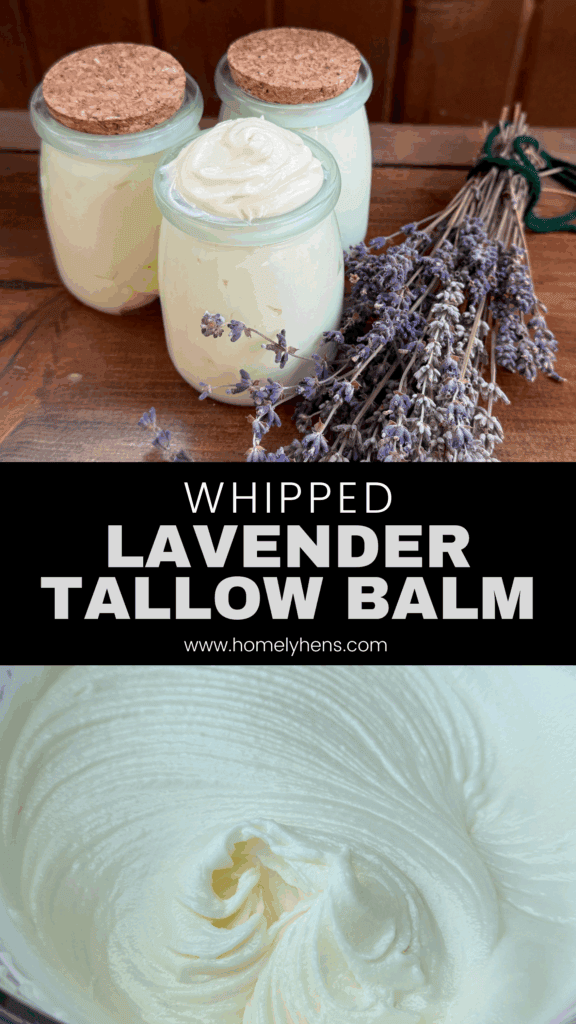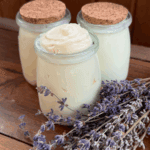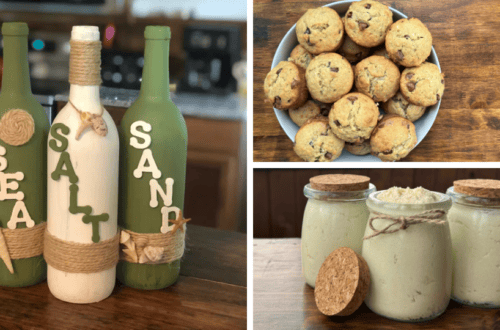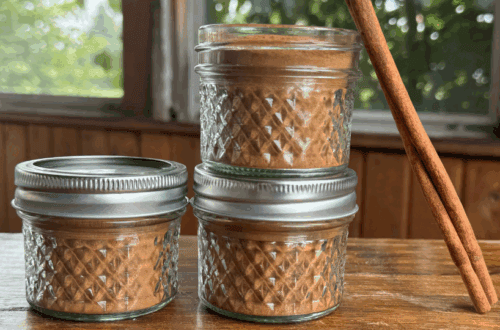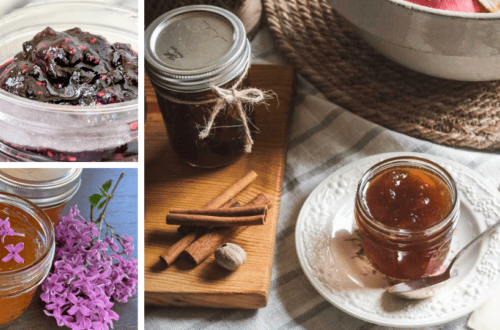How to Make Whipped Lavender Tallow Balm for Nourished Skin
Lavender whipped tallow balm is a deeply nourishing, all-natural moisturizer perfect for dry or sensitive skin. Made with simple, traditional ingredients, this balm soothes, softens, and locks in hydration.
If you’re looking for a clean skincare option without synthetic fragrances or fillers, this recipe is for you. It’s gentle enough for everyday use, and you only need a little to see results.
In this post, you’ll learn how to make your own whipped balm, what each ingredient does, and how to customize it with different oils or scents. Let’s create something your skin will love. For more simple and effective skin-supporting recipes, visit our Salves and Balms Page.
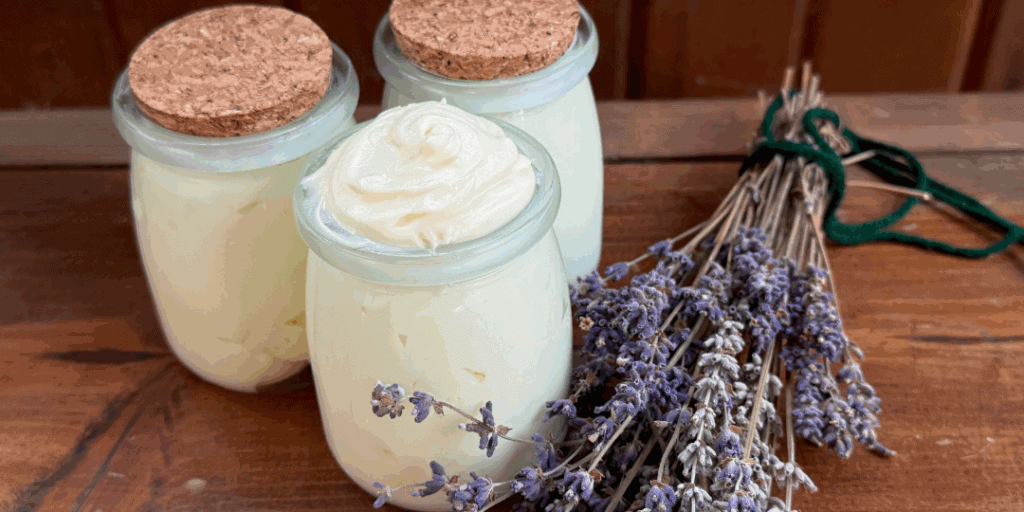
This post contains affiliate links. This will not cost you anything but will help us to offset the cost of running the blog. We only share products we use and would recommend to a friend. Thank you for your support! Click ‘HERE’ for more info.
Quick Recipe Snapshot
- Step 1: Gently melt tallow and oils
- Step 2: Add essential oils
- Step 3: Cool the mixture until solid
- Step 4: Whip until fluffy
- Step 5: Store in glass jars
What Is Whipped Tallow Balm?
Whipped tallow balm is a skincare product that is made from tallow and could include other oils and essential oils. Tallow is the rendered and purified fat of a ruminant animal, most commonly a cow or deer. Tallow has a great fatty acid and nutrient profile that makes it easily absorbed and used by our skin.
Why is Tallow Used in Skincare?
Tallow closely resembles the skin’s natural oils, making it a great choice for skincare. It also acts as a barrier to help seal in moisture and protect your skin. Tallow doesn’t have to be mixed with other ingredients to benefit the skin. Simply applying tallow is the easiest way to get the benefits.
When combined with a couple of other ingredients, you can get a smooth skincare product that has the added benefits of the other ingredients. Ingredients like jojoba or olive oil can make it softer, while essential oils can make it smell nicer and offer additional benefits.
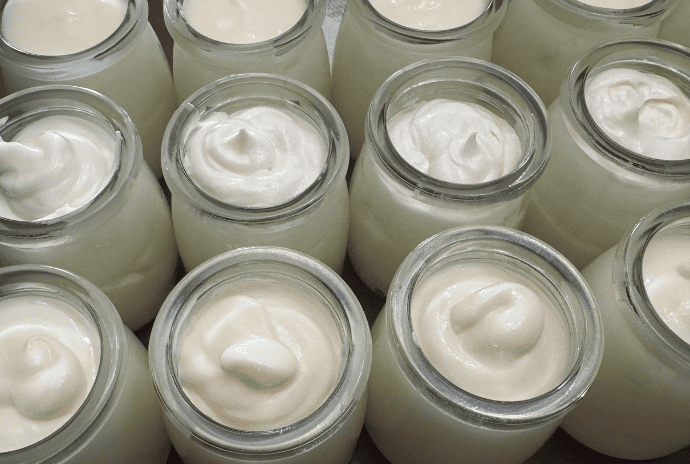
Why People Love Whipped Tallow Balm
Tallow balm is deeply moisturizing and nutrient-rich. It is a natural way to combat dryness, acne, and other skin issues you may have. Whipped tallow is lighter than solid tallow because you use a blender to incorporate air into the tallow. This makes it fluffier and easier to apply, but it is an optional step!
Benefits of Lavender for Skin
Lavender essential oil has a calming scent as well as skin-soothing benefits. It helps with inflammation, redness, and minor wounds, making it perfect for irritated or dry skin. Its relaxing aroma also supports stress relief, which benefits skin health overall.
Choosing an organic essential oil is important for quality. Organic essential oils will be free of pesticides and other chemicals that we want to avoid using on our skin. If you have sensitive skin, using an organic oil will help ensure there are no contaminants mixed into your essential oil. Organic farmers are also generally more environmentally friendly, looking out for the pollinators and keeping soil healthy.
Ingredients & Supplies for Lavender Whipped Tallow Balm
- Tallow – I prefer to render my own tallow using grass-fed suet that I get from a local farmer or butcher. Learn how to render tallow yourself, or you can purchase it online. Using tallow rendered from grass-fed and finished suet is best for skincare. Be picky when choosing a tallow to purchase online; you want to make sure it is from suet, so it has all the skincare benefits that you’re looking for.
- Organic Jojoba Oil (jojoba oil option from Amazon or jojoba oil from Mountain Rose Herbs – Actually not an oil, but a wax, jojoba balances the skin’s natural oils and adds a smooth, silky texture to the balm without making it greasy.
- Organic Lavender Essential Oil (lavender essential oil from Amazon or lavender essential oil from Mountain Rose Herbs – Calms irritated skin and adds a soothing, floral scent.
- Glass Jars with Lids and Tags – These glass jars hold about 4.5-5oz of whipped balm and are perfect for gift-giving or storing for yourself. 4-oz mason jars also work well.
- Kitchen Scale – When creating DIY skincare products, it is important to have precise measurements, especially when you’re using essential oils, which may be harsh on your skin if you use too much. Grab a simple kitchen scale so you can measure by weight.
- Thermometer Gun – Not totally necessary, but it does come in handy when measuring the temperature of the oil, so you know when to add your essential oil. You can always use another thermometer if you already have one.
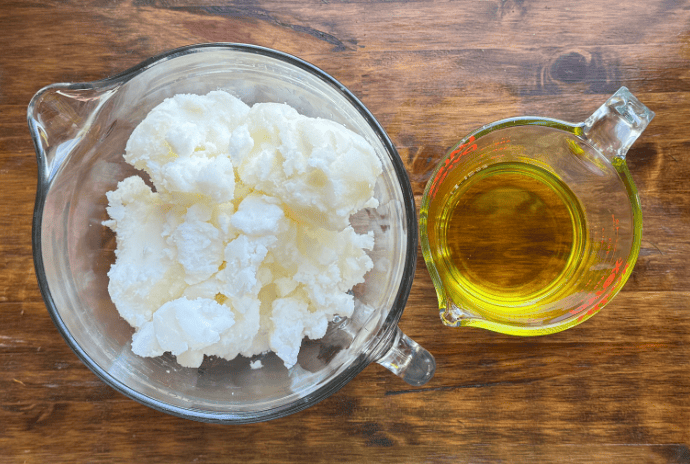
Ingredient Substitutions
You can swap jojoba oil with sweet almond oil, apricot kernel oil, olive oil, or rosehip oil. These are all light, skin-loving oils and can be swapped evenly.
Swap the lavender essential oil for chamomile for calming, frankincense for aging skin, or tea tree for acne-prone skin. These essential oils can be swapped using a 1:1 ratio, but always do a skin patch test for sensitivities.
How to Make Lavender Whipped Tallow Balm (Step-by-Step)
Step 1: Using a kitchen scale, weigh the tallow and jojoba oil and combine them in a heat-safe bowl. Melt using a double boiler or in the oven on the lowest temperature setting. You don’t want to scorch the tallow or kill any nutrients. When melted, stir until fully combined.
Step 2: Weigh the lavender essential oil into a small container. It is important to measure weight instead of counting drops because different droppers will give you slightly different amounts of essential oil. Add the lavender essential oil when the tallow/jojoba oil mixture is at about 100ºF. Adding it when the mixture is too hot can damage the essential oil’s beneficial properties.
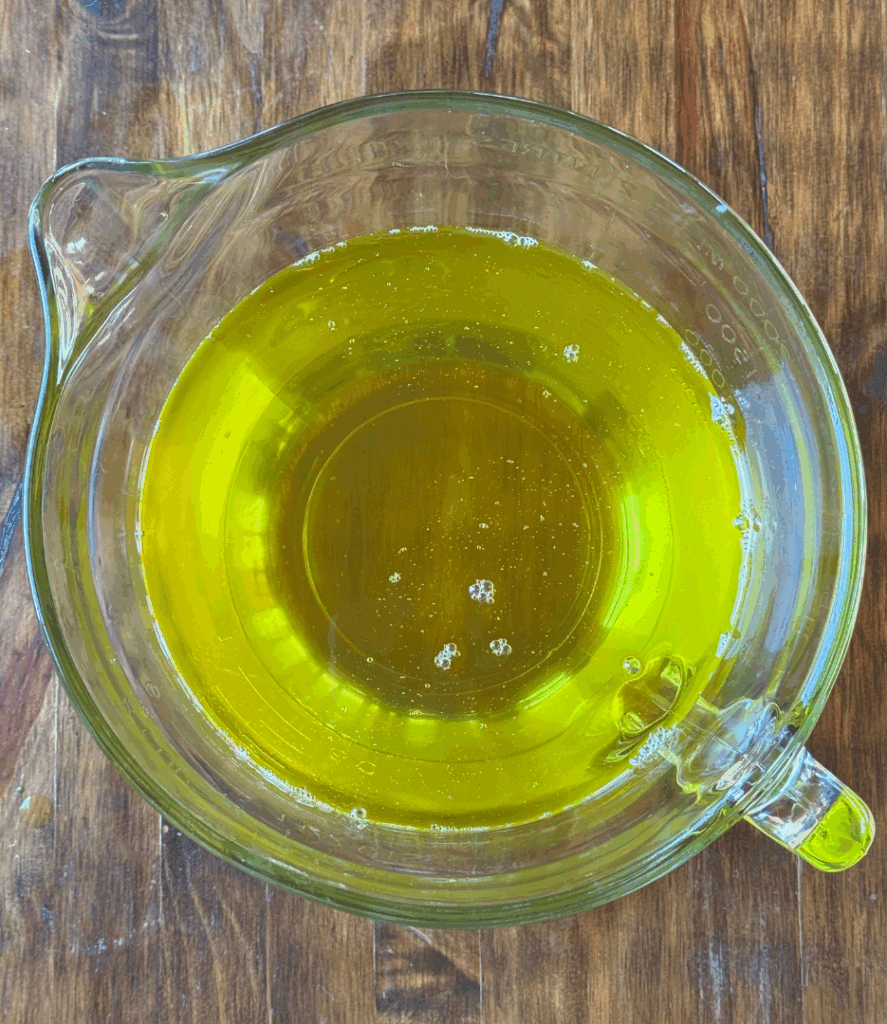
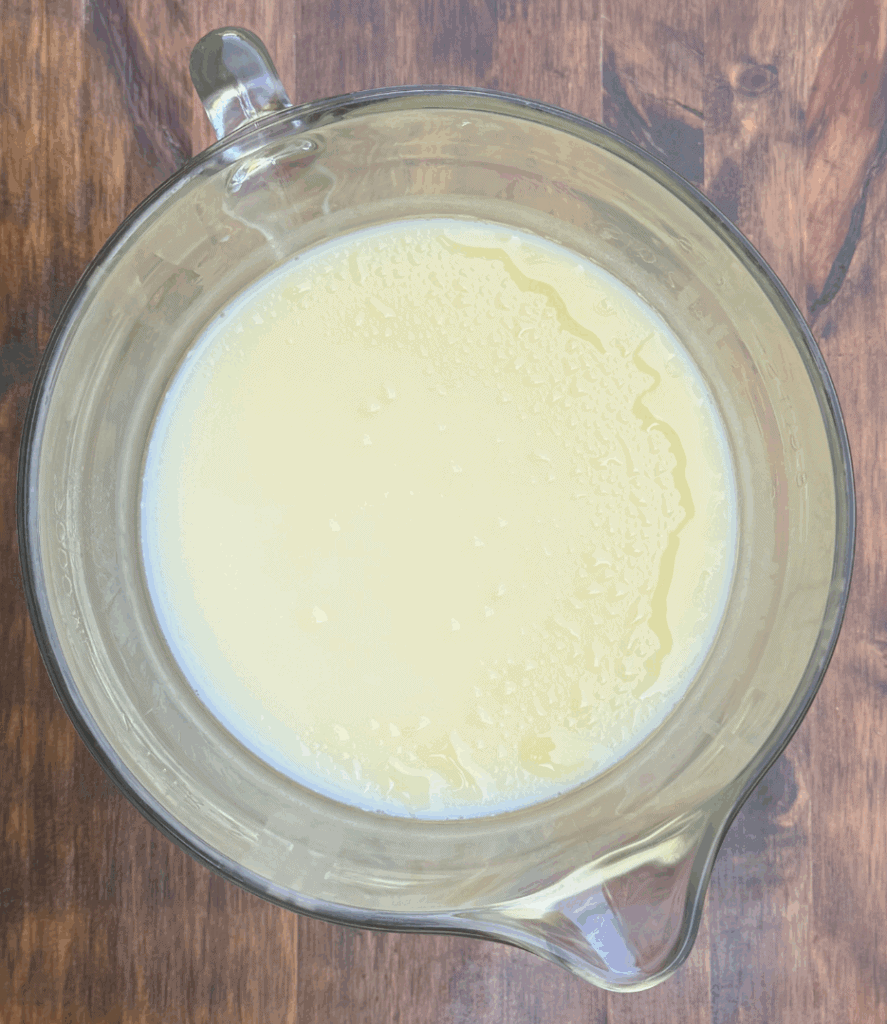
Step 3: Put the bowl in the refrigerator so it will solidify quickly. Cooling the balm quicker helps its texture remain soft and prevents it from turning grainy.
Step 4: Using a hand mixer or stand mixer, start on low and whip the tallow balm. As it softens, you can speed up the mixer. Scrape down the sides as needed.
Step 5: Using an icing bag or ziplock bag, pipe the whipped balm into glass jars for storage. You can scoop it in with a spoon or use another method to get the balm into the jars. Put lids on and don’t forget to label them.
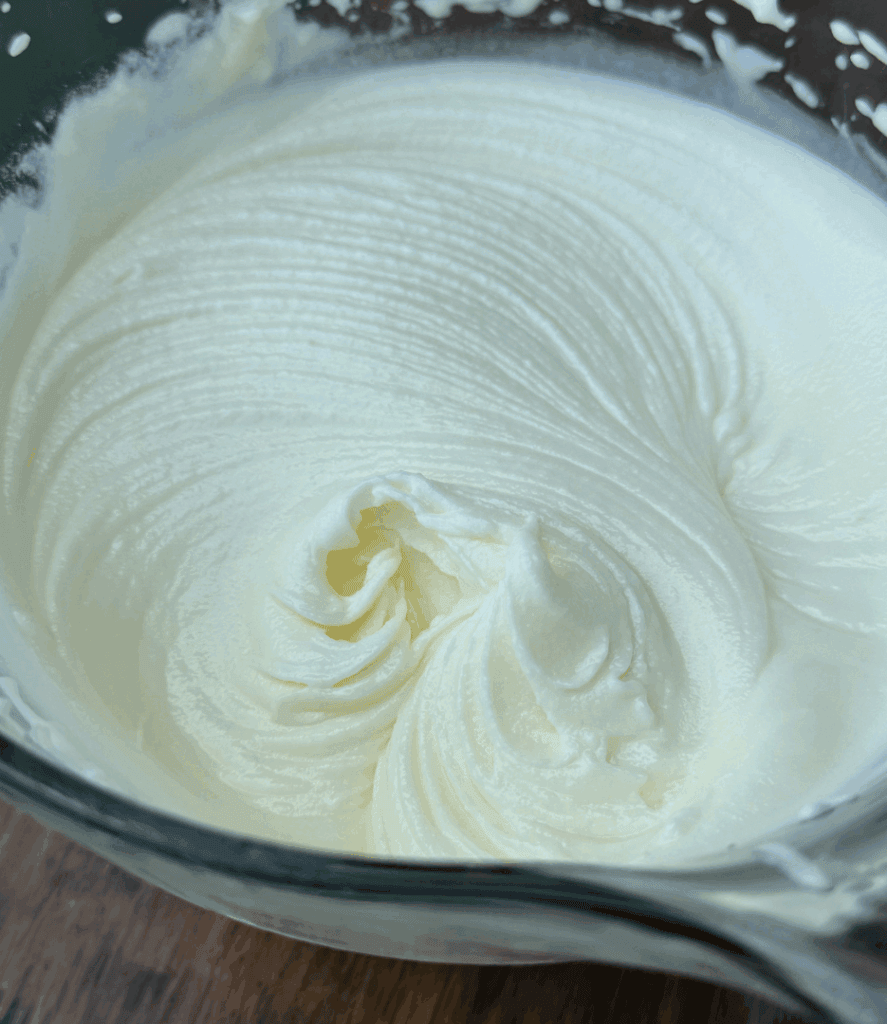
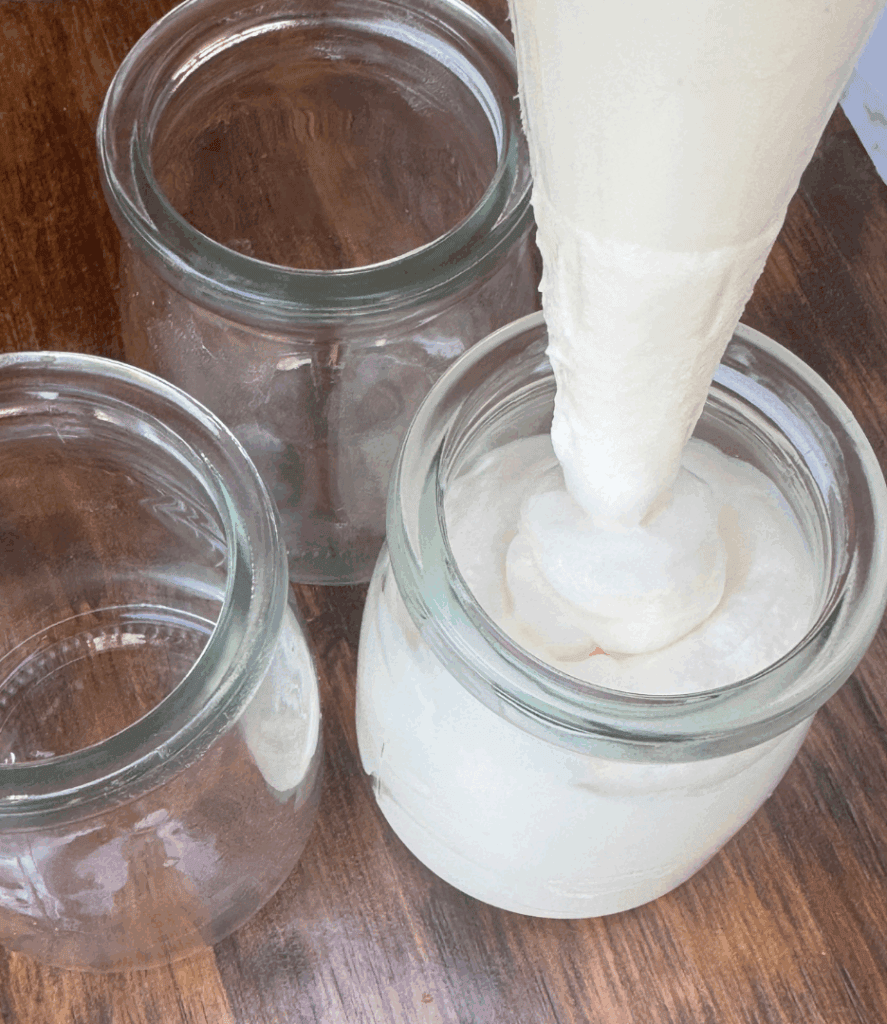
How to Use Lavender Tallow Balm
A little goes a long way with this whipped lavender tallow balm. It is safe to use on your face, hands, feet, and body, wherever you want or need. It’s great for cracked heels, dry patches, eczema, or just as a nightly moisturizer before bed to help seal in moisture while you sleep.
Lavender is a gentle essential oil that is typically safe for even those with sensitive skin and kids; however, you always want to do a patch test, and I don’t choose to use products with essential oils on babies younger than 6-12 months.
Storage and Shelf Life for Tallow Balm
Store your whipped lavender tallow balm in a cool, dry place, away from direct sunlight and heat. It will last about 12 months thanks to the naturally long shelf life of tallow and jojoba oil.
For even longer freshness, you can store it in the fridge, especially if your home is warm or humid. This slows oxidation and helps preserve the scent of the essential oils. The balm will become firmer when chilled but will soften again at room temperature.
Store your whipped balm in a glass jar to avoid plastic getting into your skincare. Amber or other dark glass jars will help protect the essential oils from UV light, so if your balm will be stored somewhere that is exposed to light, these jars are best. If not using amber, just store the balm out of sunlight.
Always use clean, dry hands when scooping to prevent contamination. Scooping balm with even slightly wet hands will introduce moisture into your balm and will cause it to mold.
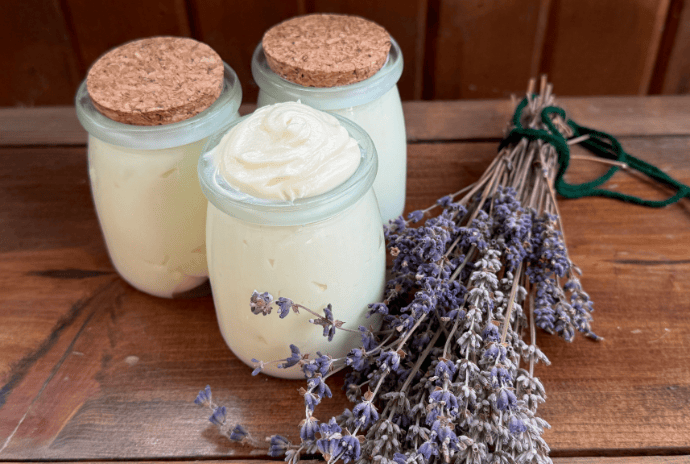
FAQs About Tallow Balm
Yes! Tallow balm made without essential oils is still so beneficial to your skin. For extra sensitive skin or for babies, unscented tallow balm is the way to go; just omit the essential oils and follow the recipe as directed. Our Calendula Tallow Balm is infused with dried calendula and does not include essential oils.
The smell of tallow depends on the type of fat used, how many impurities are in the fat, and the rendering process. Follow How to Dry Render Tallow to get a scentless tallow that you can make yourself. If you’re buying, make sure the tallow is from grass-fed suet. Try to stay away from companies that say they deodorize tallow because this could include a chemical added to it or really high temperatures that kill nutrients.
Yes, you can use it on your face. Lavender is a more gentle essential oil that is usually safe for facial use. Use the lower amount of essential oil in the recipe to dilute it a little more for facial use. Always test a small patch of skin for sensitivities.
Essential oils are not safe for babies from newborn to 3 months old. Some essential oils are deemed safe for 3-12-month-old babies, like chamomile and lavender, but I choose not to use them until after about 12 months old.
Whipped lavender tallow balm is considered safe to use during the 2nd and 3rd trimesters of pregnancy, especially to combat stretch marks. Many experts do not recommend the use of essential oils during the 1st trimester.
Whipped Lavender Tallow Balm
Equipment
- 5-6 jars
- thermometer gun
- kitchen scale
Materials
- 20 oz grass-fed tallow 567 grams
- 6 oz organic jojoba oil 170 grams
- 0.15–0.25 oz organic lavender essential oil 4.25-7 grams
Instructions
- Measure tallow and jojoba oil and combine them. Melt using a double boiler or in the oven on a low temperature. When melted, stir until fully combined. See Notes for tallow rendering instructions.
- Measure and add lavender essential oil when the tallow mixture is at about 100ºF.
- Put the bowl in the refrigerator so it will solidify quickly.
- Using a hand mixer or stand mixer, start on low and whip the tallow balm. As it softens you can speed up the mixer. Scrape down the sides as needed.
- Add the whipped balm to glass jars for storage.
Notes




